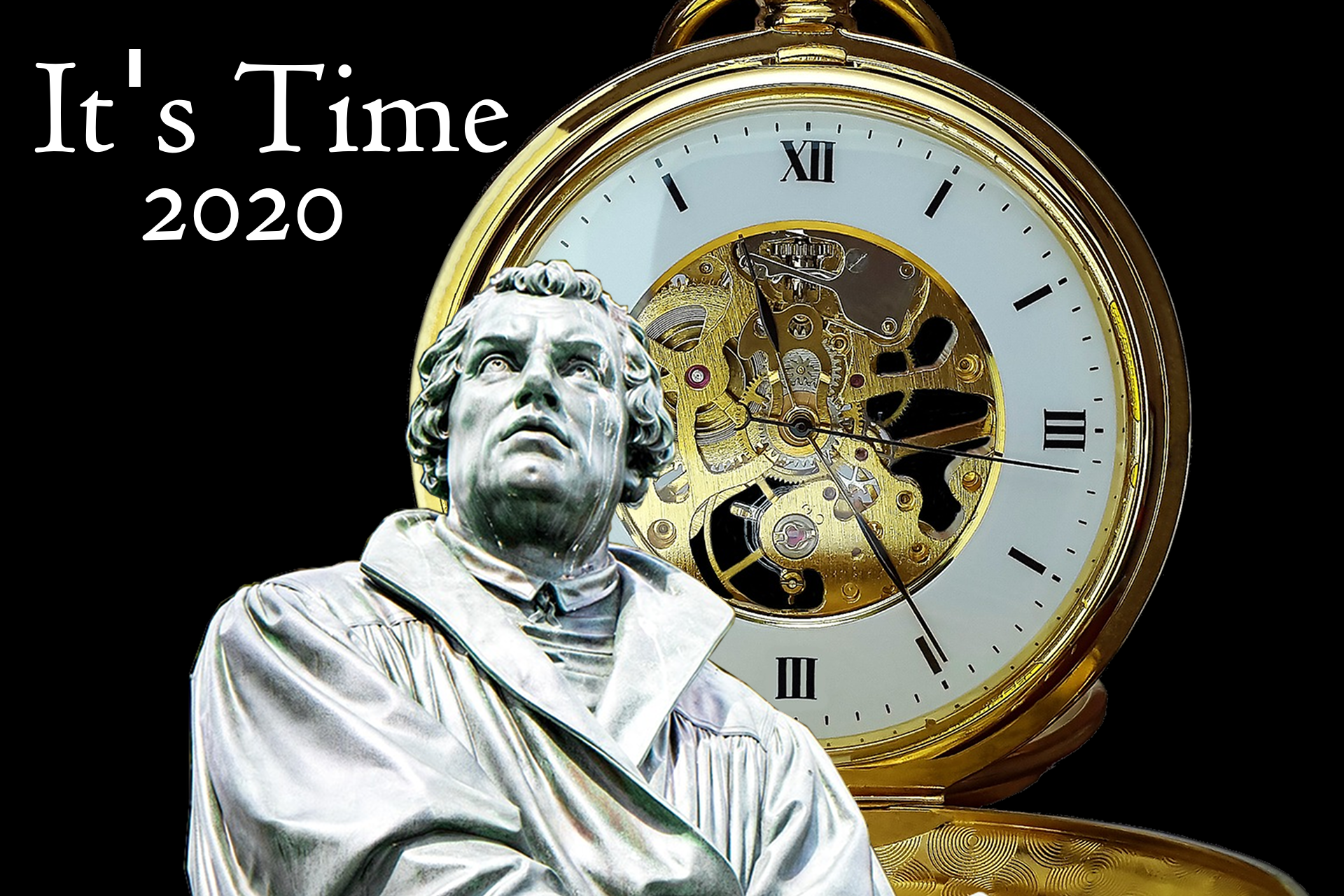In October 2008, Pastor Harrison (Later President Harrison) laid out a vision of life in the LCMS. Instead of bylaws, procedures, and worldly ideas of corporate governance, he argued for a churchly approach. It was centered on the Word of God preached and taught in congregations, and a synod that encouraged and supported that work. He painted with a broad brush; it was not a policy document, it was a vision of what the church could be.
At the same time, others were arguing for restructuring the corporate life of the church (LCMS Inc!) according to the latest trends in the non-profit world. A blue-ribbon task force recommended changes that were major in their scope, but minor in their philosophy. Three generations of incremental change had given the LCMS a shiny office building, and a typical office-work mentality. Pastors were called out of the parish, installed in cubicles, and worked 9 to 5, clocking in and out at the appointed hour. The work of the church is the Gospel preached and taught. It may be during regularly scheduled worship times. But it also happens in homes, farm fields, street corners, hospitals, and especially at the death bed. It happens at any hour when someone needs pastoral care.
Pastor Harrison wanted to return the synod to a more pastoral-care approach. At the 2010 convention, the synod made two choices:
One was to elect Matthew Harrison as president to implement a new structure. The second was the more corporate structure recommended by the committee, instead of President Harrison’s churchly model.
In Christian humility, President Harrison attempted to make it as good as he was able. He followed the scriptural principles of Witness, Mercy, and Life Together for reordering the office-culture of the International Center. It was a tremendous effort. It bought us nearly a decade. But the truth is, it was always bound to fail. Corporate structure is no way to run a church. Our Lord gives the plan for the church: Pastors and people together studying the Word of God and proclaiming it, each according to their office, and responding in prayer. Structures must arise out of the congregational life of the church and the vocations of her members. They must support and channel their energies back into that.
Corporate governance sees congregations as franchises of the brand LCMS-Inc. We have a logo, a reputation, and a mission statement. The congregation is the local extension of the brand. This structure works for fast food. It does not work for the church. But President Harrison yielded his own desires to the decisions of the synod in convention.
10 years later, we can see what happened. He rebuilt the IC from the ground up, but it was still a franchise-based model. What is needed is a congregational model, centered in the life of our people, and in the congregations and communities where they live. It needs to be a model that helps pastors care for the flock entrusted to them, not a model that seeks to optimize synergies as we align our core competencies for maximum missionization.
In the past decade, President Harrison, working under the Word of God, has accomplished a great deal: Increased use of the synod’s approved hymnal, increasing concern for the doctrines taught in scripture and our Lutheran Confessions, a steady stream of translated theological works from Luther and the other great teachers of the church. The task he was given was herculean: A divided synod facing an uncertain future of decline needed solid theological leadership. He provided it. He even set an example of congregational love by accepting a call as an assistant pastor at a congregation in our synod.
But the synod still follows a worldly corporate model for its governance. Bylaws, policies and procedures are the go-to documents, not the Word of God in Holy Scripture and the Lutheran Confessions. The way we think about the work of the church must change – and it now appears that it must change quickly.
The COVID crisis and sudden drop in funding at the synod level is only an acceleration of a long-standing trend. Cutting positions at the International Center buys us time. It will not save us. We need to change how synod functions. Rather than a hierarchical and worldly business model we need a scriptural, service model. Only if we make that change can we hope to preserve our synod and pass on the legacy of faithful Christian service to our children and grandchildren.
We can no longer kick the can down the road. Declining revenues were already a problem before 2020. Now, congregations have seen attendance fall dramatically. By the grace of God, most congregations are stable financially, but without extra resources to pass ‘up the chain’ to corporate. There are hard truths we must face, and we must face them now. If we do, we can continue faithful service to Christ into the future. If we ignore the reality and try to continue on as before, we will be lurching from crisis to crisis, forced to close one historic institution in the LCMS after another.
If we are to save the synod, we must change to a scriptural structure, as President Harrison advised in 2008. It has taken us generations to arrive where we are. We have only a short time to fix problems that seem overwhelming – because they are. We don’t need to restructure. We need to cut the Gordian knot of modern business practice and return to a scriptural model of governance and life. This will be a huge challenge – in many cases, we don’t even know how to think outside the box of modern business practice. How do we return to faithfulness, and what would that look like?

 Home
Home